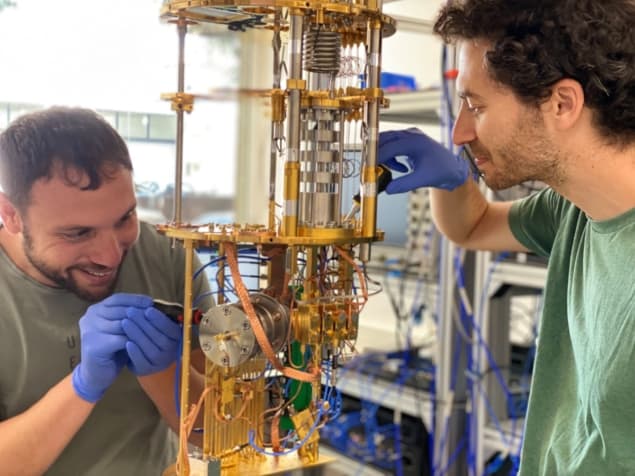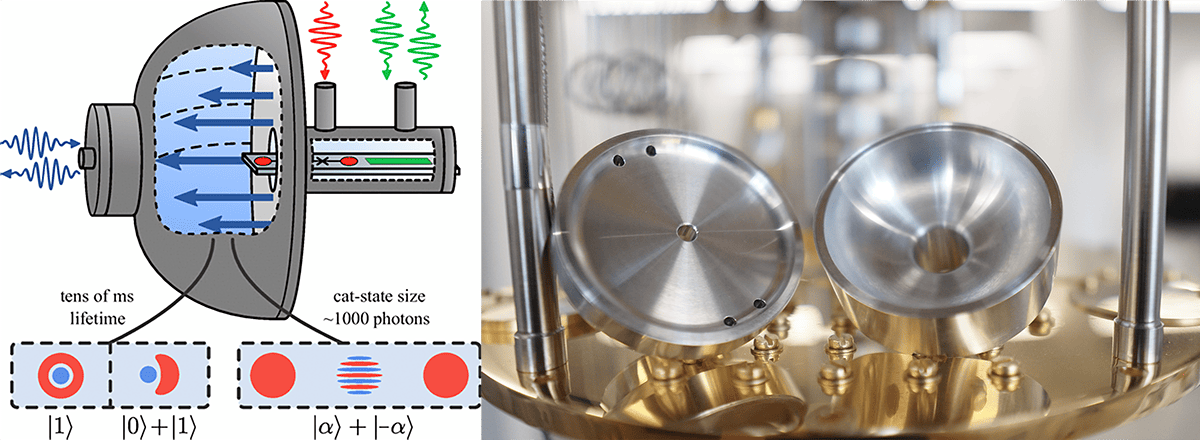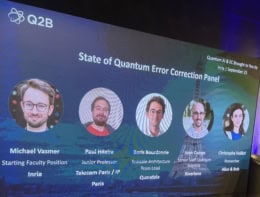
Over the history of quantum computing, the coherence time of superconducting qubits – that is, the time during which they retain their quantum information – has improved drastically. One major improvement comes from placing superconducting qubits inside three-dimensional microwave resonator cavities, which preserve the qubit’s state by encoding it in photons stored in the cavity.
In a recent study, researchers from Israel’s Weizmann Institute of Science pushed the boundaries of this method by demonstrating a novel three-dimensional cavity qubit setup with a single-photon coherence time of 34 milliseconds (ms). Long coherence time is key to achieving low-error qubit operations (thereby reducing the hardware required in fault tolerance), and the new coherence time shatters the previous record by more than an order of magnitude.
Qubits are highly sensitive to their environments, and readily lose information due to noise. To preserve qubit states for longer, researchers turned to microwave resonator cavities as a form of storage device. As their name implies, these cavities are three-dimensional structures comprising a hollow space designed to accommodate a superconducting transmon qubit chip and the microwave photons that interact with it. Through an encoding process involving the application of specific microwave pulses, the qubit state is transferred to the cavity state and stored there. Once the desired period has passed, the state is retrieved by encoding it back into the transmon. The cavity thus plays a crucial role in controlling and measuring the qubit placed inside it.
For practical applications in quantum information processing, the cavity must be capable of storing the quantum state for extended periods. However, achieving this is not straightforward due to various external factors. Because they are the smallest particles of light, photons are hard to confine, and are easily lost. Disturbances in the qubit chip placed inside the cavity are significant sources of photon damping and decoherence. The formation of an unwanted oxide layer on the cavity’s surface further diminishes the photon lifetime.
Engineering a novel cavity design
Led by Serge Rosenblum, Fabien Lafont, Ofir Milul, Barkay Guttel, Uri Goldblatt and Nitzan Kahn, the Weizmann team overcame these challenges by designing a low-loss superconducting niobium cavity that supports a long-lived single-photon qubit. They used highly pure niobium to fabricate two separate parts of the cavity, and later welded the parts together to prevent photons from leaking out. They also removed oxide and surface contaminants by chemically polishing the cavity.
The resulting structure looks a little like an open umbrella, with a half-elliptical geometry that evolves into a narrow waveguide where the umbrella’s handle would be. Like a satellite dish antenna, which has a curved surface that reflects radio waves towards its focal point, the elliptical structure of the cavity concentrates the electromagnetic field at the centre of the flat surface of the other half of the cavity (see image).

Once the team had prepared the cavity, “the biggest challenge was to integrate a superconducting transmon qubit into a cavity without diminishing the cavity’s photon lifetime”, Rosenblum says. “This takes us back to the infamous balancing act in quantum systems between controllability on one side and isolation on the other.”
The researchers achieved this balance by placing only about 1 millimetre of the transmon chip inside the elliptical cavity, while the rest is housed inside the waveguide. This configuration minimizes chip-induced loses. The cavity’s limited exposure to the chip does, however, weaken the cavity-transmon interaction, so the researchers compensated for this by applying strong microwave pulses to encode the qubit state in the cavity.
Leveraging a cavity for quantum memory and quantum error correction
Thanks to this innovative cavity design, researchers achieved a single-photon lifetime of 25 ms and a coherence time of 34 ms. This is a significant improvement over the previous state-of-the-art cavity, which had a coherence time of about 2 ms.
Rosenblum and colleagues also demonstrated an error-correction method known as bosonic quantum error correction, whereby the qubit’s information is redundantly stored in multiple photons occupying the cavity (so-called Schrödinger cat states). This preserves the fragile qubit state by storing it in many cavity photons, not just a few. The drawback is that as the number of stored photons increases, so does the photon loss rate. Despite this constraint, the Weizmann team achieved Schrodinger cat states with a size of 1024 photons. This corresponds to an average number of 256 photons, which is 10 times larger than previous demonstrations – a remarkable advancement that could improve the performance of bosonic quantum error correction.

Cat qubits reach a new level of stability
With a photon lifetime four orders of magnitude greater than the time required for gate operations, this breakthrough provides ample time for controlling the qubit before it loses information. Looking ahead, Rosenblum says the team’s aim is to realize quantum operations on these cavities with unprecedented fidelity, or probability of success. Notably, he mentions that after the study was published in PRX Quantum, the team has more than doubled the single-photon lifetime to 60 ms, indicating significant potential for further advancements.



